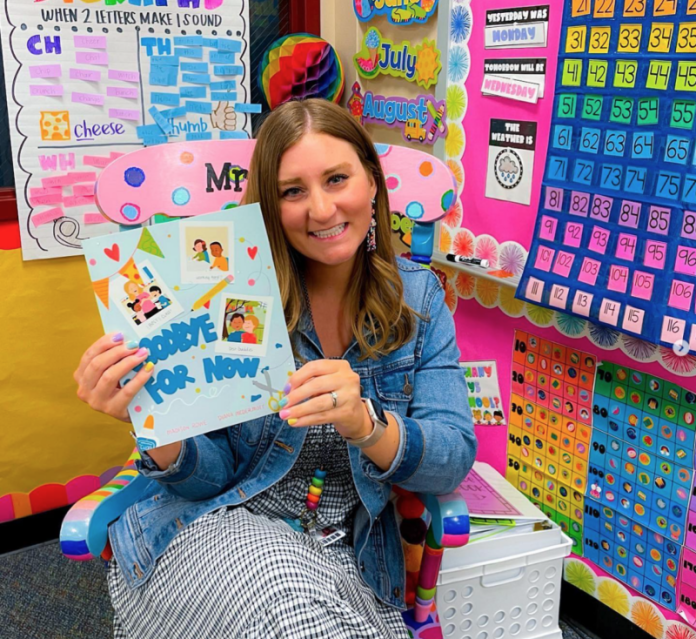The teaching methods of teachers never cease to evolve – their styles, the content they choose to cover, and how they wish their students to perceive what they have learned.
Teachers must adapt to this technological revolution as well. Such as students that don’t have much time and use uk.assignmentgeek.com/mba.html. This is how the concept of a teacher’s Instagram was born.
In the past, teachers would upload videos of their lessons to YouTube. They post now on Instagram.
The article discusses three useful tips to create an Instagram account for teachers that is both beneficial for students and teachers.
Take note of the name of the account
You might make a mistake when you first try to pronounce the name.
You should use the real name of your student or their parent. You can also use their specialty in the name of your account, but avoid things such as grade levels or alliteration.
You can also relate it to what you do and your area of expertise. You can also relate it to the niche or audience of your target audience.
Check to see if someone else has already created an account with the same name. This will help to avoid confusion or people having difficulty finding you.
Type the name you want to find in Instagram’s search box. Use it if there aren’t any results. Consider changing, adding, or omitting it.
A Google search to check if any other blogs are using the same name is a great way to ensure individuality. This is especially true if you plan on having your own blog in the future.
Take Care of What You Include in Your Bio
People will check the bio first, after the photo, to learn more about what the teacher does and who they are.
You can include your state, specialization, hobbies, and activities, as well as links to other websites.
Some teachers will write their own bios, describing who they are as well as how they could help students or other teachers.
Maintain a professional appearance without revealing too much of your private life.
It is good to add links to videos or articles that you have been featured in. This will help your followers to get to better know you.
To make the bio look more clear and organized, type the text in Notes App and copy it and paste it into the bio.
Create a business-oriented account immediately to allow the account algorithm to adapt to your business.
You may not be able to see your own content if you decide to make changes later. The algorithm will hide it.
Create Good Content and Post Regularly
You will find it much easier to manage your time if you create a schedule for posting!
Teachers are already busy and have many things to deal with. Consistently posting can seem to be a chore that they don’t want to undertake. This is when the posting schedule comes in handy.
You can plan your posts and post them at a time that suits you.
Teachers can spend their time on what they enjoy instead of feeling rushed.
Engagement is key to the success of any account. This is the key to exposure and reach.
Post about topics that students can interact with and engage them in interactive activities.
The following can be increased by posting on stories.
There are many ways on the Internet to find out how to edit Instagram photos. This will save you time and make it easier for you.
- Define your purpose: Decide the goals of your Instagram profile. What is the purpose of your Instagram account? Is it for sharing teaching tips, displaying classroom activities, inspiring other educators or connecting with students and their parents? A clear goal will help you create content that is relevant to your audience and guide the creation of it.
- Optimize your profile: Make it professional and attractive. Write a brief and compelling bio that highlights the teaching experience you have, use a profile photo with a high-quality image, and add relevant contact details or links to your blog or website.
- Consistent branding: Create a visual theme for your Instagram account. Stick to a specific color palette. To maintain an appealing and cohesive feed, use fonts and filters that are consistent.
- Sharing engaging and valuable content will resonate with your audience. You can share teaching strategies, activities in the classroom, lesson plans and educational resources. Mix photos, videos and captions together to produce varied, interesting content.
- Use hashtags and captions: To increase your post’s visibility and reach more people, use relevant hashtags. Use popular hashtags related to education in your captions. Create captions with context that ask questions or promote interaction.
- Engage with Community: Interact actively with followers, and with other teachers on Instagram. Participate in discussions, respond to comments and ask for suggestions or input. Interact with and follow other educators, influencers, and organizations in your field.
- Collaboration and sharing: Participate in Instagram Takeovers or shoutouts with teachers, education accounts, or other educators. It will help you reach new people and promote your content. To foster community, share articles or blog posts by other educators.
- Keep up to date: Be aware of the latest trends, discussions, and news in education. Share relevant and timely content that addresses educational reforms or new teaching methods. It shows you’re knowledgeable about education and interested in it.
- Infuse Your Unique Personality into Instagram. Your captions and content should reflect your enthusiasm for education. Use personal anecdotes or stories to demonstrate your passion for teaching.
Pay attention to the details and respond to your followers’ needs and demands.
Most importantly, you should only create a new account if it is for the correct reason. Do not try to copy the style of other teachers.








